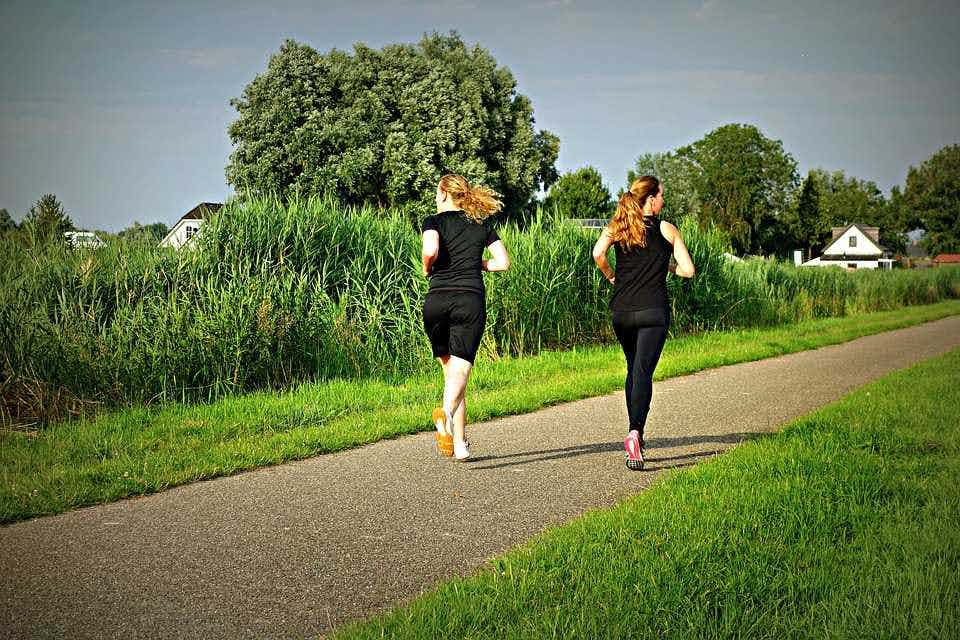As winter blends into spring, days become longer, and our thoughts begin to turn to the summer. One of the main benefits of longer days is more time to enjoy some outdoor exercise. The firmer ground underfoot makes exercise more enjoyable, too. As lockdown starts to ease towards a potentially normal summer, this article will help you create your workout plan for when lighter evenings return.
Ready to transform your life? Whether you're looking for a new pair of running shoes or some shiny home gym equipment, you can find everything you need to fuel your fitness journey with our partner brands.
The benefits of outdoor exercise
Theoretically, at least, there is little reason why you can’t exercise at home, and many people have enjoyed that. But it isn’t quite the same as embracing nature, having the sun (or more likely wind) on your face, and being able to move freely without worrying about crashing into the coffee table mid-burpee.
Benefit #1: Outdoor exercise can improve mental health
The industrial revolution brought many benefits. One of the most underrated was the building of numerous public parks and gardens. The theory at the time was that being connected to nature could improve public health.
This has proven to be an accurate belief, with recent studies demonstrating that exercising outdoors can improve your mood as well as your self-esteem. There are lots of reasons why this could be the case. Exercise alone has been shown to produce mood-enhancing endorphins, and outdoor activity seems to be even more effective.
Benefit #2: Vitamin D exposure
After the best part of a year spent indoors, many people in the UK could well be suffering from a lack of vitamin D. Sunshine is an excellent source of vitamin D, and exercising outdoors can help you top up yours while also experiencing the other benefits.
Low vitamin D levels can affect mood, sleep, hormones, and cognition. So a daily dose of vitamin D in the form of exercise is an excellent tonic for your physical and mental health.
Benefit #3: Improved decision making
Most studies into concentration and nature have focused on children with ADHD. However, there seems to be a correlation between time spent outside and your ability to focus and concentrate afterwards.
Several studies also highlight many cognitive benefits, with spending time outdoors helping with memory in particular. Improved working memory has been shown to help you make better decisions and make them faster. This can help to reduce procrastination and make you more assertive in the workplace.
Benefit #4: Burn more calories
While a specific cause has only been hypothesised, the idea that exercising outdoors can lead to you exercising harder than indoors on your own is gaining traction. The theory is that because outdoor exercise can improve mood, it can also reduce the rate of perceived exertion (RPE). RPE is a scale (usually 1-10) of how difficult an exercise feels.
Many things can influence RPE. If you wake up after a terrible night's sleep, you will be fatigued, and even a 10-minute jog may feel impossible to complete. If, however, you wake up well-rested and drink a double espresso, that 10-minute jog may feel ridiculously easy. The task itself hasn't changed in difficulty, but your perception has.
If exercising outdoors can reduce the RPE thanks to improved mood, it will allow you to exercise at a higher intensity, therefore burning more calories.
Your workout plan for when lighter evenings return
Now you're aware of the benefits of outdoor exercises, here is a five-step plan to make the most of these lighter evenings and enjoy a late-afternoon exercise session.
Step #1: Remove barriers to exercise in advance
If you plan on exercising after 5 pm, it's a good idea to remove all barriers to exercise beforehand. A barrier to exercise is anything that makes your decision a little harder. This might be not finding your workout shoes, your kit still being in the wash, or being unable to find your water bottle.
As crazy as it sounds, these minor issues can easily be enough to derail an entire workout. Rushing around, trying to find your workout kit, can be frustrating and reduce motivation. Even if you do manage to get outside, your head won't quite be in it.
That's why you should have everything ready for your session a couple of hours beforehand. Fill a water bottle and place it in the fridge. Have your workout gear lying out on your bed so that you can quickly get changed into it. Have your iPod charged with your headphones next to it.
Ensure that these annoying tasks are all planned out so that when that time hits, you can get changed and get outside.
Step #2: Prioritise your workout time
Life is complicated and often hectic. Some days we cannot justify an hour of exercise, no matter how often fitness magazines or websites say otherwise. But most days, it should be possible to get at least half or ideally a full hour to yourself. You just need to prioritise it.
Make a contract with your family and friends that at 5 pm (or whatever time suits you) every day you have an hour to exercise. If you are working, let your colleagues know that hour is set aside for exercise.
Don't let your workout time be negotiable, and don't move your workout to accommodate others. Let others move their schedule to accommodate your workout! It's a small mindset change that rarely affects your life much, but it can make a massive difference to your workout adherence.
Step #3: Pick a workout routine that suits the outdoors
One of the downsides to exercising outdoors is a lack of fitness equipment. This means that you are a little limited in what you can do. No barbells, dumbbells, kettlebells, or resistance machines. Here are some exercises that work well in an outdoor setting:
- Brisk walking or hiking
- Jogging and running
- Bodyweight exercises, such as squats, lunges, push-ups, burpees, and mountain climbers
- Outdoor fitness gyms, which you can find in many parks
- Cycling
- Recreational sport
Step #4: Exercise with a partner (if allowed)
Depending on the current rules, if you are allowed to exercise with a friend or family member outdoors, this can be beneficial. Not only will the social dynamic help to improve mood and enthusiasm, but it can make outdoor exercise safer.
Step #5: Mix it up
Again, this depends on what rules are in place. Changing your locations, reversing your usual route, and exploring your local neighbourhood can make outdoor exercise more enjoyable and reduce monotony. You've been staring at the same four walls for months, don't exchange that for the same 12 trees or patch of grass!









